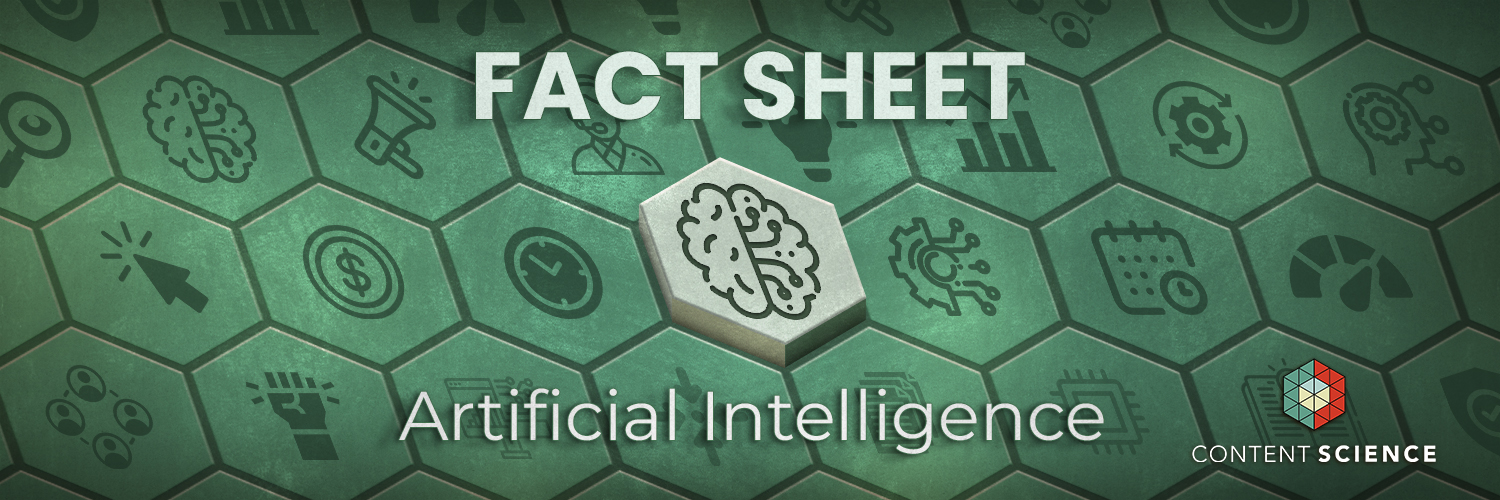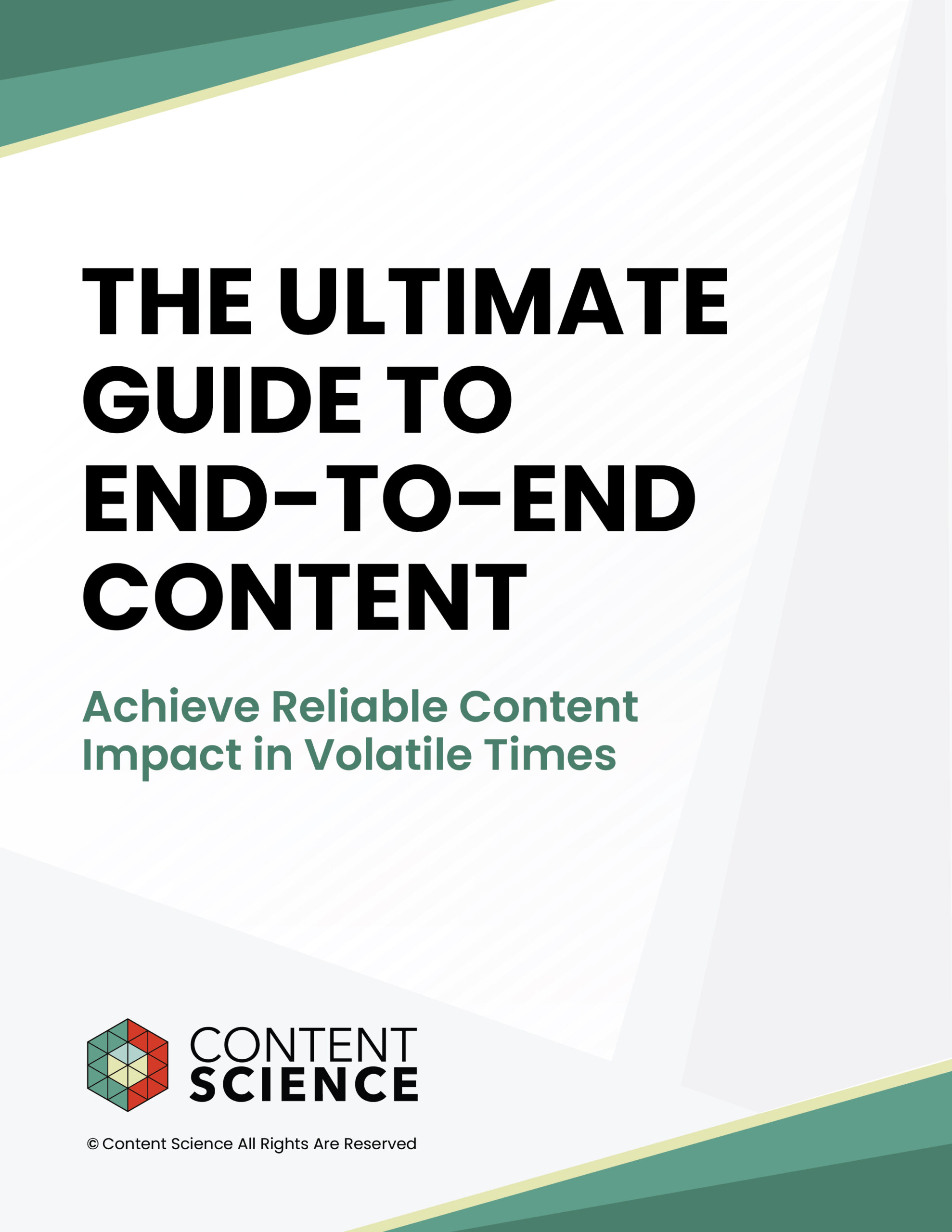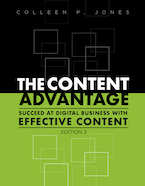
Artificial intelligence (AI) is at a tipping point. Ever since the launch of artificial intelligence company OpenAI’s ChatGPT, more people are talking about and using AI than ever before. ChatGPT had one million users just five days after it opened to the public. Let’s take a closer look at the current facts related to artificial intelligence.
What Are the Types of AI?
Organizations are developing and using AI in many ways, beyond novel content generation. AI uses computer systems to do tasks that typically only humans have been able to do. IBM defines it this way:
Artificial intelligence leverages computers and machines to mimic the problem-solving and decision-making capabilities of the human mind.
Modern AIs can be divided into two main categories: machine learning AI and deep learning AI. Both are trained on thousands, sometimes millions, of examples to “teach” them what to do and how to do it. However, there are a few differences between machine and deep learning.
Machine learning requires more supervision in its execution and often requires its work to be evaluated by a person. Examples of machine learning AIs include:
- KNIME Analytics Platform, which connects users to machine learning libraries to automate and optimize analysis processes
- Grammarly, which uses natural language processing (NLP) AI to analyze and edit text
- Alteryx, which streamlines and automates analytics processes to help businesses make informed decisions
- ContentWRX, which uses NLP to analyze themes and sentiment in feedback about content
AI can be trained to do specific tasks or, as with ChatGPT, can be built to think and act as a human would using a type of AI called deep learning. Deep learning depends on neural networks and large language models (LLMs) with large sets of content and data. Other powerful deep learning programs include:
- DALL-E, which creates images and art based on a description and also comes from OpenAI.
- Deepmind, which is a subsidiary of Alphabet and is involved in Google’s AI Overview.
- Make-A-Video, which is from Meta.
Content Science lists an increasing number of AI tools in its biannual Content Technology Landscape Infographic. These tools can help you write, edit, and create video or imagery.
So what does all of this mean for content professionals? Start answering that question with some facts.
The State of AI
More companies are adopting generative AI. In 2024, use of AI in 2 or more business functions increased to 50%. — McKinsey
Majority of companies say they have started automation initiatives. Seventy-three percent of executives say their organizations have embarked on a path to intelligent automation, up 58% from 2019. Those organizations range from piloting, with 1 to 10 automations (37%), to scaling, with 51 or more automations (13%). — Deloitte
Tech giants invest in generative AI. “Microsoft Corp. is investing $10 billion in OpenAI, whose artificial intelligence tool ChatGPT has lit up the internet since its introduction in November, amassing more than a million users within days and touching off a fresh debate over the role of AI in the workplace. The new support, building on $1 billion Microsoft poured into OpenAI in 2019 and another round in 2021, is intended to give Microsoft access to some of the most popular and advanced artificial intelligence systems.” — Bloomberg
No one really knows how deep learning AI works. It’s a puzzle that no scientist, engineer, or analyst has figured out. Until that puzzle is solved, deep learning AI will be unpredictable. — MIT Review
57% of online content is machine translated. — Forbes
AI regulation emerges. “New AI legislation went into effect in the European Union, and it’s far-reaching. As the first real regulation of AI, the EU Artificial Intelligence Act sets rules on the use of AI for facial recognition, safeguards for general AI systems, and ways to submit complaints or request explanations of using AI, especially AI they deem to be high risk to health, safety, citizen rights, and so on.” — The Most Curious Thing in Content
AI-fueled misinformation reaches a large audience. Researchers found that whereas the truth rarely reached more than 1000 Twitter users, the most pernicious false news stories routinely reached well over 10,000 people. False news propagated faster and wider for all forms of news – but the problem was particularly evident for political news. — Science.org
Consumer confidence in identifying AI-generated content varies. 59% of people around the world express concern about what is real and what is fake on the internet when it comes to news (72% of US). 52% of people in the USA are uncomfortable with news produced by AI with some human oversight and 42% are comfortable with new produced by humans with some help from AI. — Reuters Institute Digital News Report 2024
Consumers worry about certain types of AI-generated content. The top 5 types of content consumers are worried about AI being used for are product descriptions (70%), product reviews (60%), job applications (59%), chatbot answers to questions (58%), and music recommendations (55%). — Forbes
How Organizations Are Using AI
The release of ChatGPT has unleashed enormous potential for using AI to address content needs at large and growing organizations. But even before ChatGPT came on the scene, content professionals were increasing the use of AI in their operations.
Number of organizations using AI for content is increasing. Twenty-nine percent of organizations are using AI or machine learning in some capacity related to content. This is up from 22% in our 2022 study and up from 15% in our 2017 study. — What Makes Content Operations Successful?
Copilots are enabling productivity. Microsoft has found in a study of more than 6,317 employees with access to Copilot that they spent 31% less time reading emails, a time savings of 50 minutes a week per user. At a telecommunications company, employees spent 23% less time, saving 40 minutes per week. – AI Data Drop: 3 Key Insights from Real-World Research on AI Usage
41% of CMOs report data exposure as the top concern for implementing AI. — Salesforce
58% of manufacturing leaders planned to increase AI spending in 2024, down from 93% in 2023. — CIO Magazine
Barriers keep 40% of companies adopting AI stuck in experimentation phase. The top barriers preventing deployment include limited AI skills and expertise (33%), too much data complexity (25%), and ethical concerns (23%). — IBM Global AI Adoption Index
Individual adoption of the publicly available deep learning tools such as ChatGPT has been lightning fast. And while organizational adoption of deep learning AI has increased, the pace is slower than a Star Wars sandcrawler in comparison—and slowing. Recent reports from a range of sources (including Microsoft, which has a vested interest in advancing AI due to its relationship with OpenAI) show that, while curiosity about the potential of this AI remains high, concerns about accuracy, predictability, security, privacy, intellectual property, and other risks as well as pressure to show ROI are leading organizations to shift from a “me-too” approach to a more strategic one. Slowing down to accommodate strategy for deep learning AI is a smart move for an organization—and a great opportunity for you and your teams. — Colleen Jones, The Content Advantage (3rd edition)
Content professionals use AI to complete their tasks. “Composition, including writing, localization and collaboration, is the most common application, with 36% of AI / machine learning users citing it. This is up 66% from the 2021 study. Conversely, distribution (syndicating, targeting, etc.) is down 50% from the 2021 study.” — What Makes Content Operations Successful?
AI and the Content Job Market
Although the launch of ChatGPT unleashed a wave of predictions about the end of certain kinds of jobs, AI is far from ready to replace us all. In fact, AI will open up more opportunities for people to do their jobs faster and more efficiently.
Is the era of the “prompt engineer” coming? “To use generative AI effectively, you still need human involvement at both the beginning and the end of the process.” — Harvard Business Review
To start with, a human must enter a prompt into a generative model in order to have it create content. Generally speaking, creative prompts yield creative outputs. “Prompt engineer” is likely to become an established profession, at least until the next generation of even smarter AI emerges. …Then, once a model generates content, it will need to be evaluated and edited carefully by a human.
Some companies replace human processes with AI. AI is putting some jobs more at risk than others. 81.6% of marketers think content writers’ jobs are at risk because of AI. Companies are already replacing people. 32.9% of businesses have already replaced some human tasks with AI solutions. — Authority Hacker
AI may take you to 80% complete when it comes to content creation. “Artificial intelligence is living up to its potential for content. These tools can accelerate creating content at a high level of quality. I think of it as these tools take you to 80% complete, leaving you with about 20% to do…usually final polishing or refinement.” — 4 Content Technology Trends to Watch
Generative AI will bring new opportunities. “While some creatives may be replaced by Gen-AI systems, others may find new opportunities to work with these systems or to create content that is enabled by Gen-AI. In many cases, it may actually enhance the work of creatives by enabling them to create more personalized or unique content, or to generate new ideas and concepts that may not have been possible without the use of AI.” — Mapping the Generative AI Landscsape, Antler
How to know when you’re ready for AI. “Your content maturity level can help you figure out when and how to start your AI experiments. Knowing your level means you have identified weaknesses in your content ops, which can give you a roadmap for improvement, whether you decide to pursue AI or not.” — The Content Marketer’s Guide to AI and Content Maturity by Writer + Content Science
Bottom Line
The AI technology space is exploding. Companies and organizations worldwide, including tech giant Microsoft, are spending billions to turn artificial intelligence technology into practical tools and services.
Of course, many AI tools and services are already here. Google’s RankBrain uses machine learning to determine the most relevant results to search queries, intelligent chatbots handle steadily more customer service queries, and Amazon’s Alexa uses complex natural language processing (NLP) technology to understand what you’re saying. Using AI, content professionals can better understand their audience, improve user experience, increase productivity, and select more effective content strategies.
And, as the sophistication and ability of artificial intelligence grows, so too does that of content intelligence. Together, these two fields can produce higher content ROI through areas such as content creation and hyperpersonalized content.
Putting your head in the sand will not make this reality disappear or pause, so it’s imperative business leaders prepare for this new wave of change. Proper content engineering is a crucial aspect of preparing for the impact artificial intelligence will have on every organization, and Content Science founder Colleen Jones points to nine content engineering activities teams can start or ramp up:
- Modeling content structures, schemas, and semantics
- Architecting content using taxonomies and other metadata magic
- Designing content delivery
- CEM lifecycle planning (including when to archive!) and implementation specifications
- Marketing automation workflow planning
- Designing content management workflows, reporting, and user support services
- Content reuse planning, adaptive content strategy, and content personalization architecture
- Audience- and session-based analytics personalization rules and scoring, validating content targeting against user task success
- Multisite content syndication and content API definitions
Smart companies have been establishing a system of content engineering as part of an end-to-end content approach so they can make the most of artificial intelligence. For brief examples and inspiration, check our 2024 Content Predictions and Plans.
Events, Resources, + More
The Ultimate Guide to End-to-End Content
Discover why + how an end-to-end approach is critical in the age of AI with this comprehensive white paper.
The Content Advantage Book
The much-anticipated third edition of the highly rated book by Colleen Jones is available at book retailers worldwide. Learn more!
20 Signs of a Content Problem in a High-Stakes Initiative
Use this white paper to diagnose the problem so you can achieve the right solution faster.
Upskill with Content Science Academy
Training for modern content roles through on-demand certifications + courses or live workshops.






Comments
We invite you to share your perspective in a constructive way. To comment, please sign in or register. Our moderating team will review all comments and may edit them for clarity. Our team also may delete comments that are off-topic or disrespectful. All postings become the property of
Content Science Review.